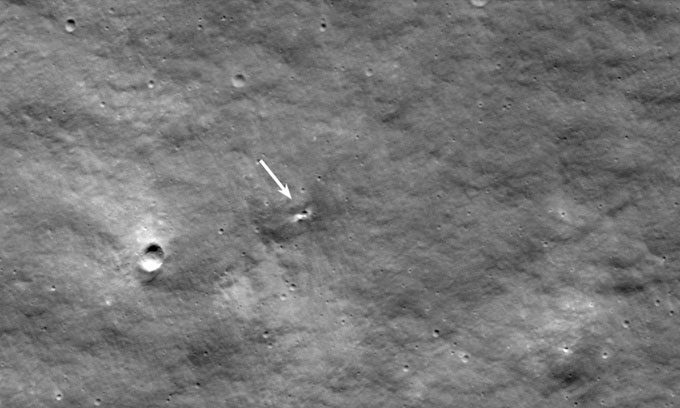The Lunar Reconnaissance Orbiter (LRO) from NASA has discovered a new crater on the Moon’s surface, likely caused by Russia’s Luna-25 spacecraft.

The Lunar Reconnaissance Orbiter captured an image of a crater that may have been created by Russia’s Luna-25 impact on August 19. (Image: NASA’s Goddard Space Flight Center/Arizona State University)
The Luna-25, a Russian lander launched to the Moon, experienced a failed mission and crashed onto the surface of the celestial body on August 19. Based on the estimated impact location provided by the Russian space agency Roscosmos, the LRO team, which is operating in lunar orbit, began searching for the “grave” of Luna-25. On August 24, the team captured images of that area using the LRO camera, comparing them to previous images of the same region, with the most recent being from June 2022. The results revealed a new crater formed on the Moon.
“The new crater is located near the estimated impact site of Luna-25, so the LRO team concluded that this structure was likely created by Luna-25 rather than a natural object,” NASA announced on August 31.
The new crater is approximately 10 meters wide and is situated at 58 degrees south latitude, on the inner slope of the Pontécoulant G crater. The impact point is about 400 kilometers from Luna-25’s designated landing site at 69.5 degrees south latitude.
Luna-25 was launched into space on August 11, marking Russia’s first lunar mission since 1976, when it was still part of the Soviet Union. The name of the spacecraft pays homage to a glorious past, as the previous lunar mission (launched in 1976) was named Luna-24.
The goal of Luna-25 was to become the first spacecraft to land gently near the Moon’s south pole, an area believed to contain significant water ice – a valuable resource for future astronauts. However, its failure has allowed this title to go to Chandrayaan-3, an Indian spacecraft launched on July 14 that successfully landed on August 23.
The Vikram lander and the Pragyan rover of Chandrayaan-3 are currently exploring the area near the Moon’s south pole. This solar-powered duo is designed to operate for one lunar day, which is about 14 Earth days. After that, the lunar night will set in, expected to halt their operations.


















































